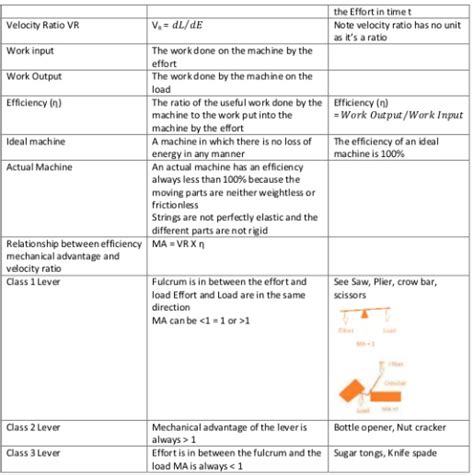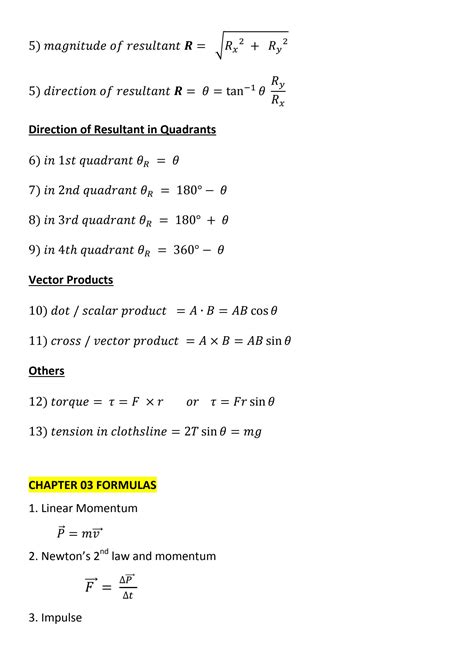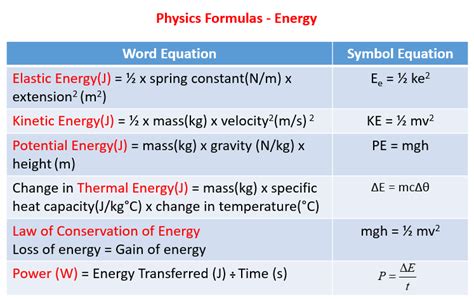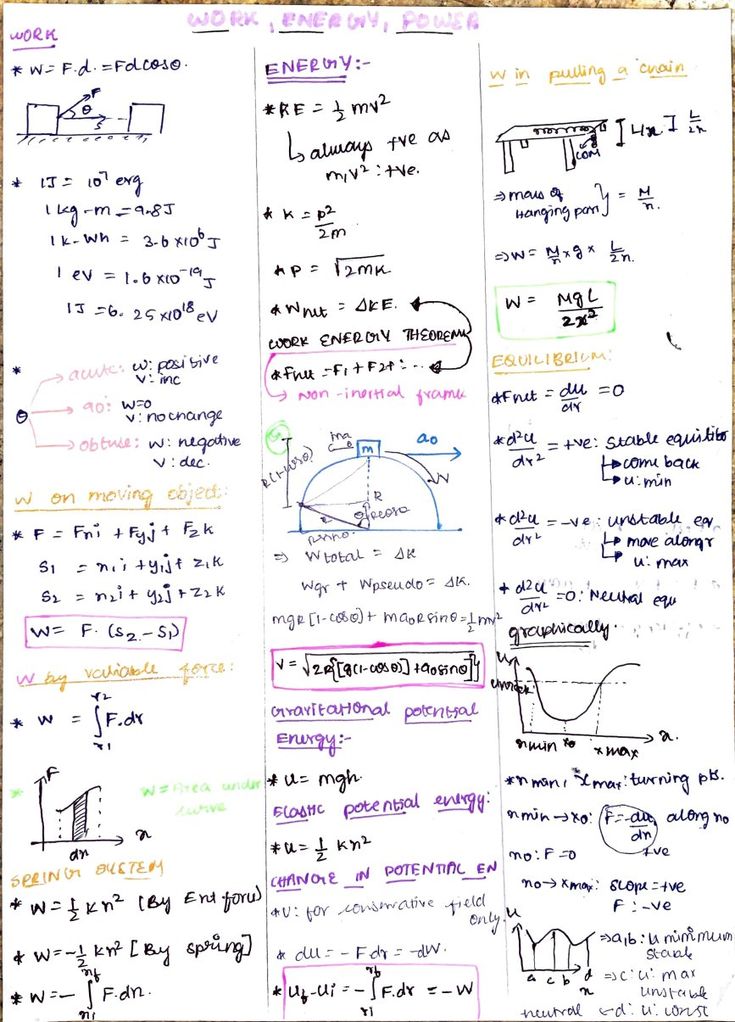The power energy formula is a fundamental concept in physics, describing the relationship between power, energy, and time. Power, denoted by the symbol P, is defined as the rate at which energy is transferred or converted. Energy, denoted by the symbol E, is the capacity to do work, which can take various forms such as kinetic energy, potential energy, thermal energy, and more. The formula that connects power and energy is P = E/t, where t represents time. This equation signifies that power is equal to the energy transferred or converted divided by the time over which the transfer or conversion occurs.
To delve deeper into the power energy formula, it's essential to understand the units involved. Power is measured in watts (W), which is equivalent to joules per second (J/s). Energy is measured in joules (J), and time is measured in seconds (s). The formula P = E/t implies that if you know the amount of energy expended and the time over which it was expended, you can calculate the power. Conversely, if you know the power and the duration, you can calculate the energy transferred. This formula is crucial in various fields, including engineering, physics, and electronics, for designing and analyzing systems that involve energy transfer or conversion.
Key Points
- The power energy formula is given by P = E/t, where P is power, E is energy, and t is time.
- Power is the rate at which energy is transferred or converted.
- Understanding the power energy formula is essential for designing and analyzing energy systems.
- The formula can be rearranged to solve for energy (E = P*t) or time (t = E/P), depending on the known variables.
- Applying the power energy formula requires knowledge of the specific context, including the type of energy and the efficiency of the system.
Derivation and Application of the Power Energy Formula

The derivation of the power energy formula is straightforward and is based on the definition of power as the rate of doing work or transferring energy. If a certain amount of work (or energy) is done over a period, the power can be calculated by dividing the energy by the time. This formula is widely applied in physics and engineering to calculate the power required to perform a task, the energy consumed over a period, or the time it takes to transfer a certain amount of energy at a given power level.
Power Energy Formula in Different Contexts
In mechanical systems, the power energy formula can be used to calculate the power output of an engine or the power required to move an object against a force. For electrical systems, it can be used to determine the power consumption of appliances or the energy stored in batteries. In thermal systems, the formula can help in calculating the power required for heating or cooling. The versatility of the power energy formula makes it a fundamental tool across various disciplines.
| Physical Quantity | Unit | Description |
|---|---|---|
| Power (P) | Watt (W) or Joule per second (J/s) | Rate of energy transfer or conversion |
| Energy (E) | Joule (J) | Capacity to do work |
| Time (t) | Second (s) | Duration over which energy is transferred or converted |

Limitations and Considerations of the Power Energy Formula

While the power energy formula is powerful and widely applicable, it has limitations and considerations that must be taken into account. One of the primary considerations is the efficiency of the system, as energy losses can significantly affect the actual power and energy values. Additionally, the formula assumes a constant rate of energy transfer, which may not always be the case in real-world applications. The type of energy (kinetic, potential, thermal, etc.) and the context in which energy is being transferred or converted also play critical roles in applying the formula accurately.
Another important aspect is the distinction between instantaneous power and average power. Instantaneous power refers to the power at a specific moment, while average power is the power averaged over a time period. The power energy formula typically deals with average power, but in systems where power varies significantly over time, understanding the difference between instantaneous and average power is crucial.
Efficiency and Energy Losses
In real-world applications, energy losses due to friction, heat dissipation, and other inefficiencies can significantly reduce the actual power output or increase the energy consumption of a system. Therefore, when applying the power energy formula, it’s essential to consider the efficiency of the system and account for any energy losses. This might involve using coefficients of efficiency or factors that represent the proportion of input energy that is actually converted into useful work.
What is the primary difference between power and energy?
+Power is the rate at which energy is transferred or converted, while energy is the capacity to do work. Essentially, power tells you how fast work is being done, whereas energy tells you how much work is being done.
How do you calculate power using the power energy formula?
+To calculate power, you divide the energy transferred or converted by the time over which the transfer or conversion occurs. The formula is P = E/t, where P is power, E is energy, and t is time.
What factors can affect the accuracy of the power energy formula in real-world applications?
+Factors such as efficiency of the system, energy losses due to friction or heat, and variations in power over time can affect the accuracy of the power energy formula. It's crucial to consider these factors when applying the formula to real-world scenarios.
In conclusion, the power energy formula, P = E/t, is a foundational principle in physics that describes the relationship between power, energy, and time. Understanding this formula and its applications is essential for designing, analyzing, and optimizing systems across various disciplines. By considering the limitations and factors that affect its accuracy, such as efficiency and energy losses, professionals can apply the power energy formula effectively to solve complex problems and improve system performance.



